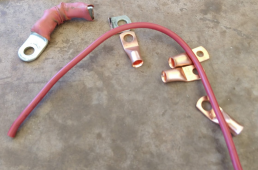Pulled the pack cover off and did some testing. Cell 4 had a couple nuts which were a bit loose with my torque wrench. Maybe 10 degrees total turn. Running at 300A discharge cell 4 is 12mv below the other cells. At 130A its 6mv. Not perfect, but since tightening those nuts improved it, I must have a bus bar that's out of flat I would guess. I will do a 20% DOD and then charge at 100A to see what happens at the end of the charge. If it stays in balance, I may just leave it. Otherwise I can pull the bus bars and check them for flatness at the contacts.
I also need to think about what I want to do with the nuts. I am not sure if they came loose on their own (lots of washboard rods), or if the bus bars compressed a bit. I may have enough threads for a jam nut, not sure.
I also need to think about what I want to do with the nuts. I am not sure if they came loose on their own (lots of washboard rods), or if the bus bars compressed a bit. I may have enough threads for a jam nut, not sure.






